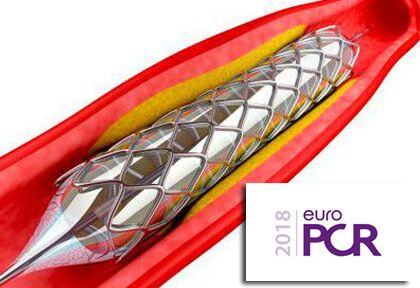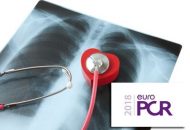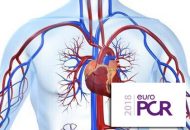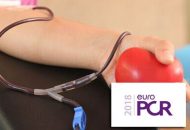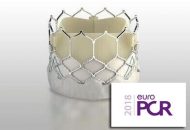This study aimed to assess the outcome of Culotte stenting with newer-generation drug-eluting stents (DES) in Medina 1, 1, 1 bifurcation lesions. The 2nd-generation device used was permanent-polymer everolimus-eluting stent Xience, a device for which there is comparatively plenty of evidence available. Alternatively, the 3rd-generation stent used was thin-strut abluminal bioresorbable-polymer everolimus-eluting stent SYNERGY. Patients with…
EuroPCR 2018 | OxAMI-PICSO: Coronary Sinus Occlusion, Improving Microvascular Function and Reducing Infarct Size
The index of microcirculatory resistance might guide therapy and controlled intermittent coronary sinus occlusions, improve microvascular function, and reduce infarct size. This study included patients with prior ST-segment elevation myocardial infarction treated with primary angioplasty. Researchers measured the index of microcirculatory resistance before stenting and intermittent coronary sinus occlusion was used if the result was…
EuroPCR 2018 | SEMPER-FI: The Reemergence of the Intra-Aortic Balloon Counterpulsation
The intra-aortic balloon counterpulsation affects patients through a combination of coronary flow improvement and afterload reduction. It has been the subject matter of several studies, but its benefit as mechanical support has not been proven. This work aims to prove the benefits of balloon counterpulsation in patients with ST-segment elevation acute myocardial infarction who, after…
EuroPCR 2018 | SYNTAX II: Results at 2 Years for Best Angioplasty vs. Surgery in Multivessel Disease
Since the publication of the original SYNTAX trial, there have been great technical advancements that have influenced the results of angioplasty: New tools for risk stratification using the SYNTAX II score which integrate clinical and anatomical variables to the team’s decision-making process. Functional revascularization (hybrid use of fractional flow reserve or instantaneous wave-free ratio). Optimization of…
EuroPCR 2018 | DESSOLV III: Bioabsorbable vs. Durable Polymer at 2 Years
Most drug-eluting stents are coated by a polymer that is used to contain the antiproliferative drug. Once the drug is released, the polymer remains in place and its presence has been associated with inflammation, restenosis, and neoatherosclerosis. The MiStent device features a polymer that becomes bioabsorbable once the drug has been released, which could, theoretically,…
EuroPCR 2018 | LEADERS FREE: Complex Angioplasty in Patients with High Risk for Bleeding
The LEADERS FREE study showed that a biolimus A9-coated polymer-free stent was superior to a conventional stent in terms of safety and efficacy in patients who received dual antiplatelet therapy for only a month due to their high risk for bleeding. In this substudy, researchers analyzed 667 patients enrolled in the original LEADERS FREE trial who met certain requirements…
EuroPCR 2018 | Swedish Registry on the SYNERGY DES: tested in primary PCI for the first time
The study included 36292 consecutive patients undergoing acute myocardial infarction receiving PCI with the new generation stent SYNERGY (thin struts, bioresorbable polymer and everolimus eluting); 39.7% presented ST elevation MI. Kaplan-Meier curves at 2 years of patients receiving the SYNERGY vs patients receiving other drug eluting stents resulted very similar for thrombosis (0,69% vs 0,81%,…
EuroPCR 2018 | LeDRA: Left Distal Radial Approach for angiography and angioplasty
The left distal radial artery has been recently proposed as an alternative in selected patients with high success rate and low complications rate. This study evaluated the feasibility and safety of this puncture both for coronary angiography and angioplasty. It included 200 consecutive patients with palpable left distal radial artery punctured by three expert operators.…
EuroPCR 2018 | SAPIEN 3 in bicuspids
First generation TAVR procedures performed on patients with bicuspid aortic valve stenosis have rendered suboptimal outcomes. In addition, studies on new generation devices, such as the SAPIEN 3, have systematically excluded these patients from their protocols. Therefore, we are missing information about TAVR on bicuspid aortic valve stenosis patients. This study compared SAPIEN 3 TAVR…
EuroPCR 2018 | SENTINEL: Anatomical Predictors of Stroke during TAVR
The rate of cerebrovascular events in TAVR hovers about 4% in most of the current studies, regardless the center, the operator or the prosthetic valve. At present, no scores can adequately predict which patients run the highest risk of stroke during TAVR, and the routine use of cerebral protection devices remains controversial. The SENTINEL study…
